Step 01: Mode Settings
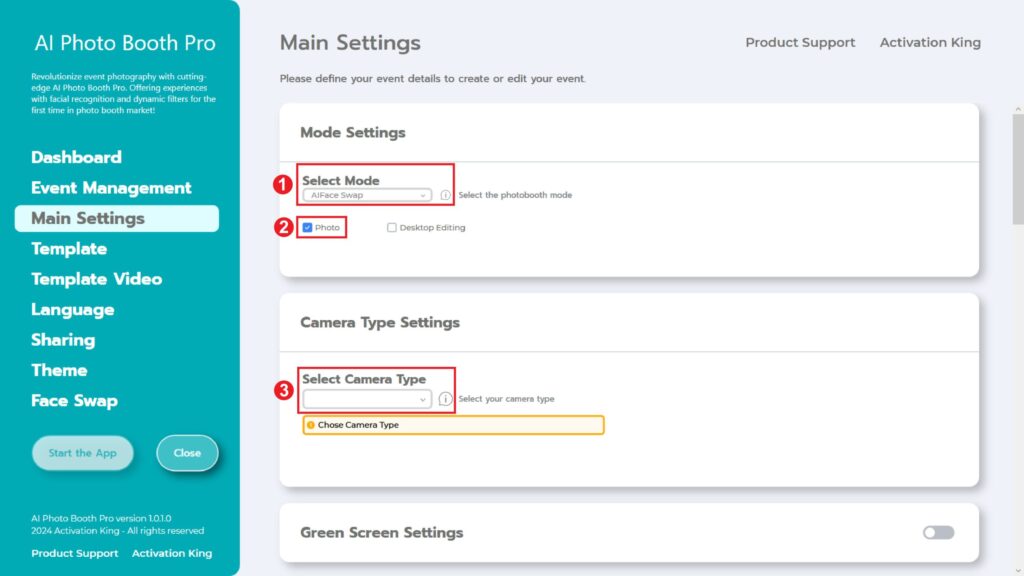
We select “AI Face Swap”. After making the selection, we select the “Photo” section from the options below.
Step 02: Camera Type Settings
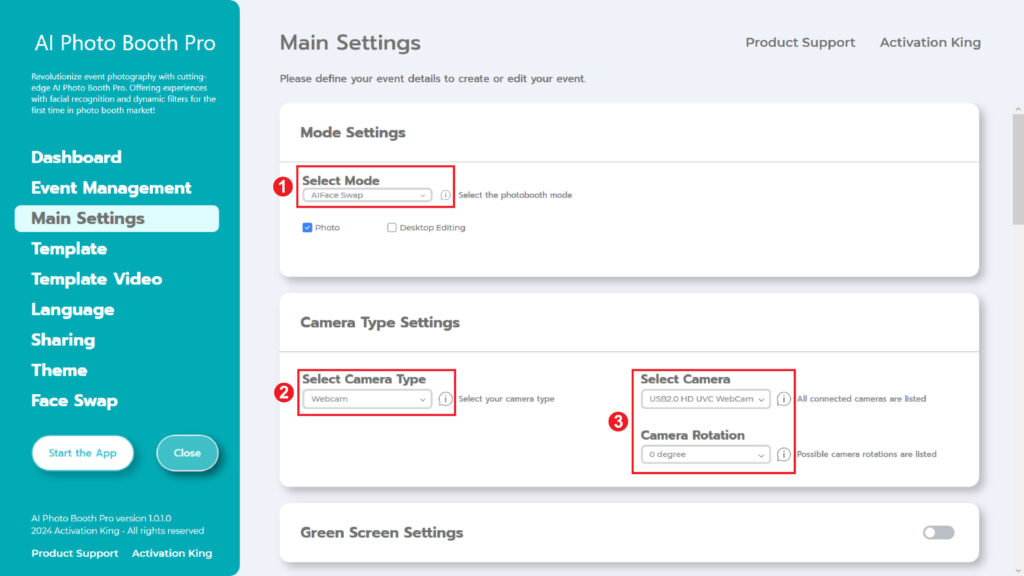
In the “Camera Type Settings” section, we select the camera type we want to use from the box in the “Select Camera Type” section. When you connect your camera to your computer, it will appear in the box in the “Select Camera” section. (If it doesn’t work, check that your camera is on and connected to your computer and try again.) After selecting your camera, you can adjust it according to your horizontal or vertical usage in the “Camera Rotation” Section.
Step 03: Camera Settings
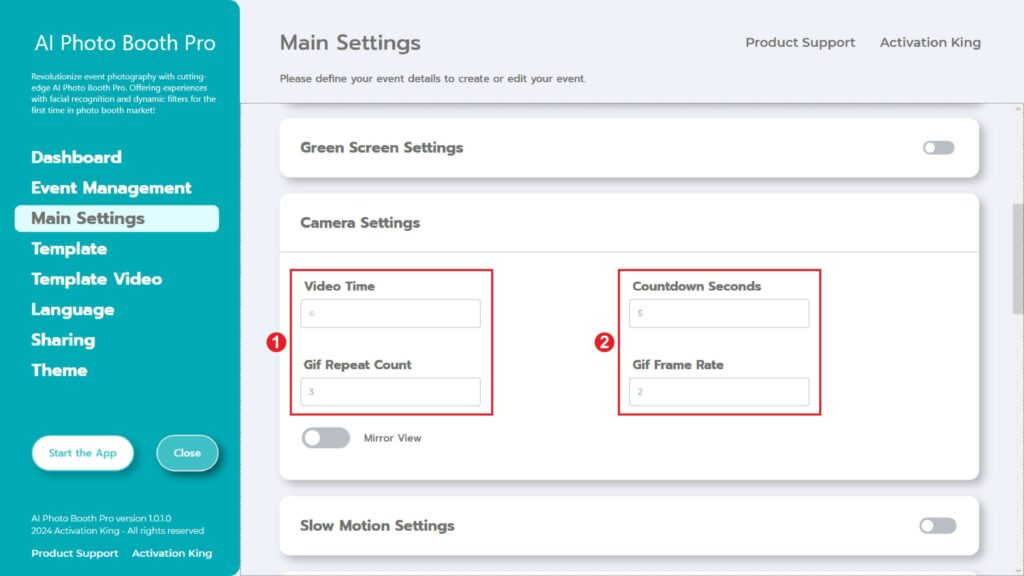
The “Template Settings” section is the interface where we can adjust the size and position of the photos we take and add digital frames and stickers.
You can determine the dimensions of our photo in the “Output Size” section. If you are going to print from the printer, we recommend that you enter the dimensions of your printing paper as 6×4 or 6×8. If you are going to do only digital work, you can also consider the other options 1280×1280, 1080×1920 or 1280×720.
Step 04: Template
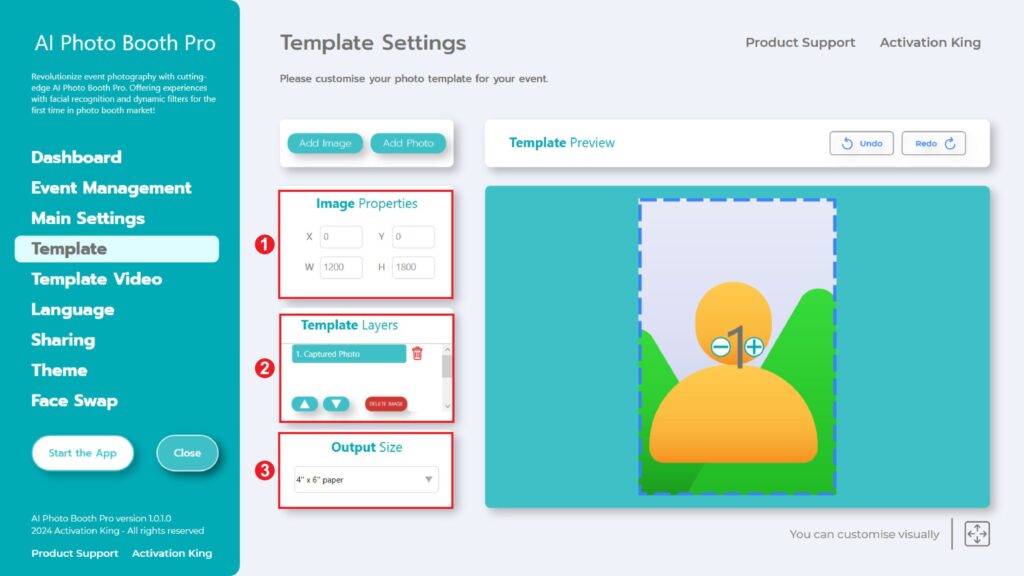
“Template Settings” is the interface we use to adjust the dimensions and positions of the photos we take, and to add digital frames and stickers.
In the “Output Size” section, you can determine the dimensions of your photo. If you plan to print from a printer, we recommend entering the dimensions of your printing paper, either 6×4 or 6×8. If you are only doing a digital work, you can also consider other options such as 1280×1280, 1080×1920, or 1280×720.
To add digital frames and stickers onto your photos, simply press the
“Add Image” section located above.
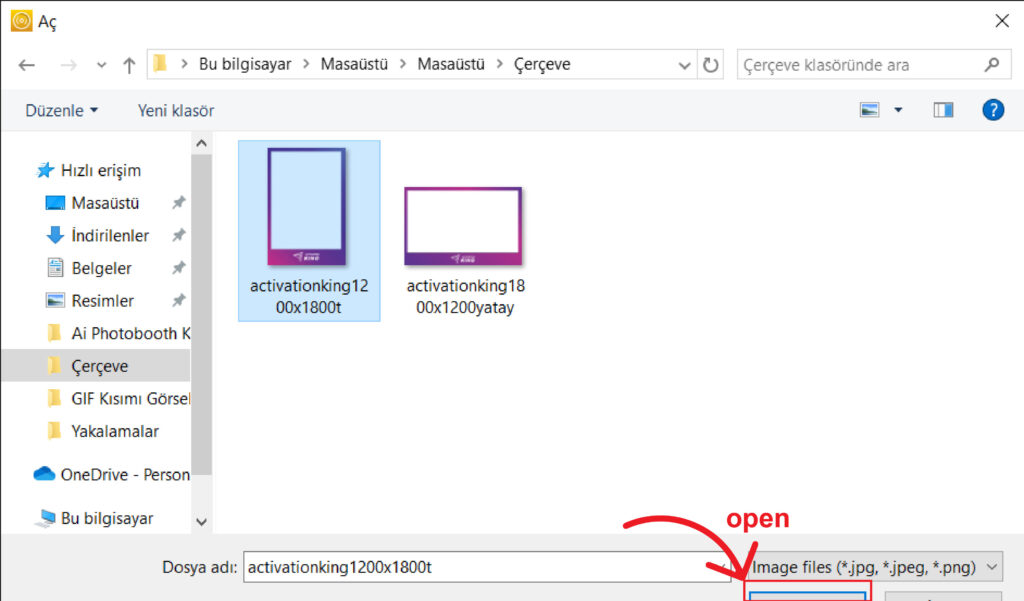
In this section, select the horizontal or vertical frame you wish to use and click “open.”
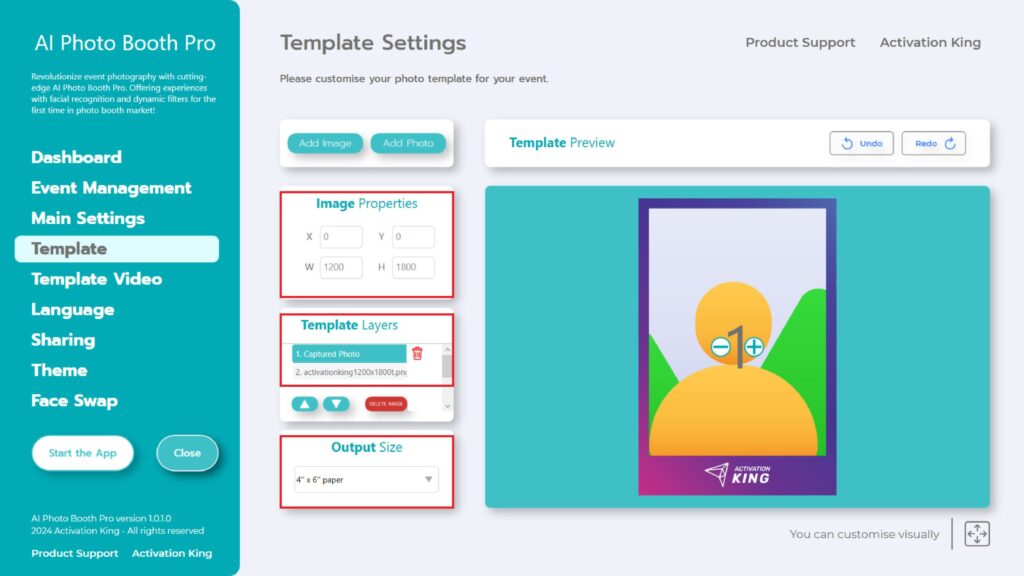
If the dimensions of the frame you added match your “Output Size” settings, it will automatically fit.
Step 05: Face Swap
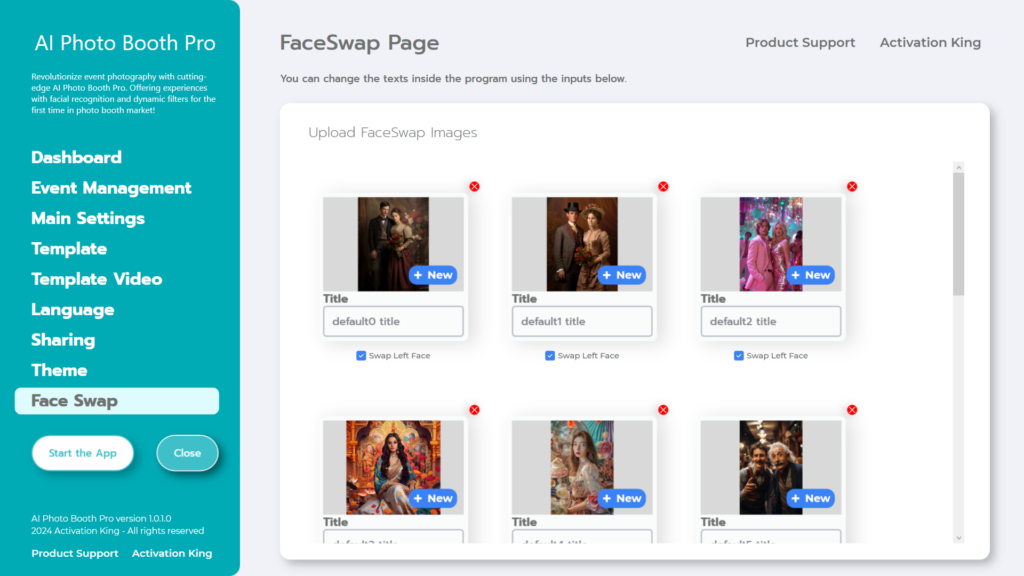
“In the “Face Swap” section, there are default images provided in the software. You can choose to remove these images or add new ones if you wish.”
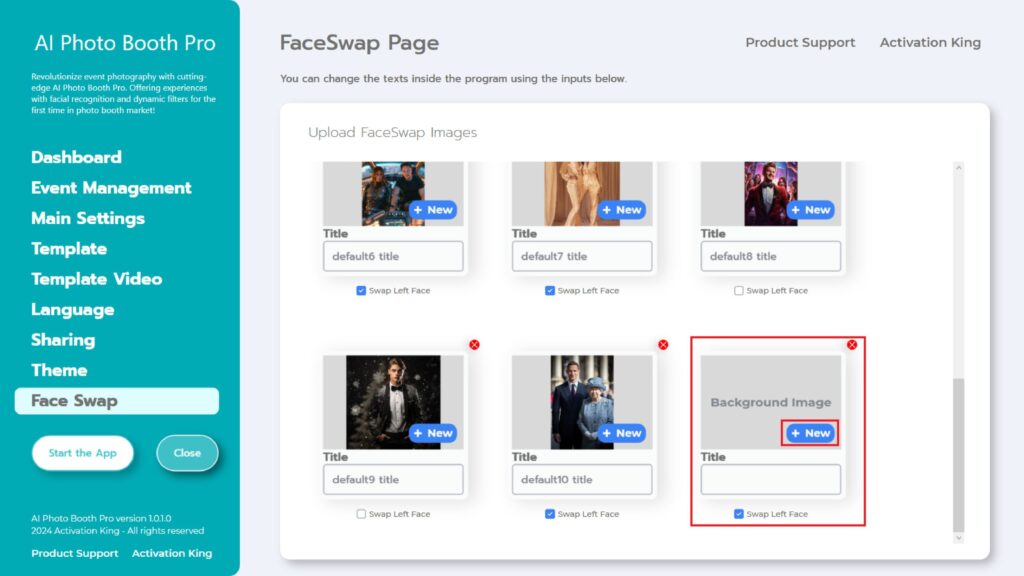
When you scroll to the bottom of the Face Swap Page section, you can also add an image of your choice.
Fill in the “Title” section as you wish.
Click on the “+New” button on the Background Image.
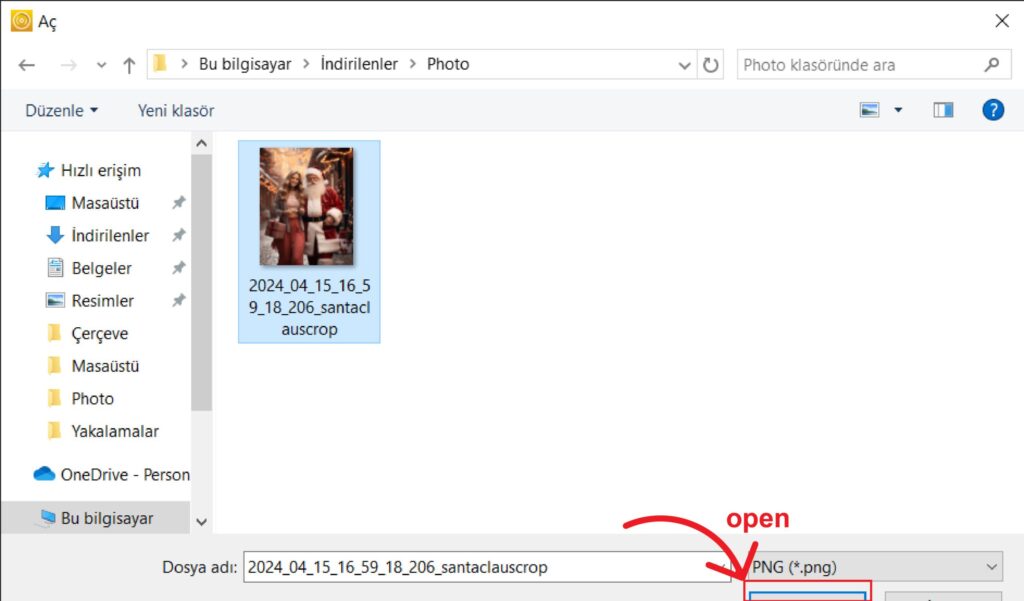
Next, locate the image you want to add from your computer and click on the “open” button.
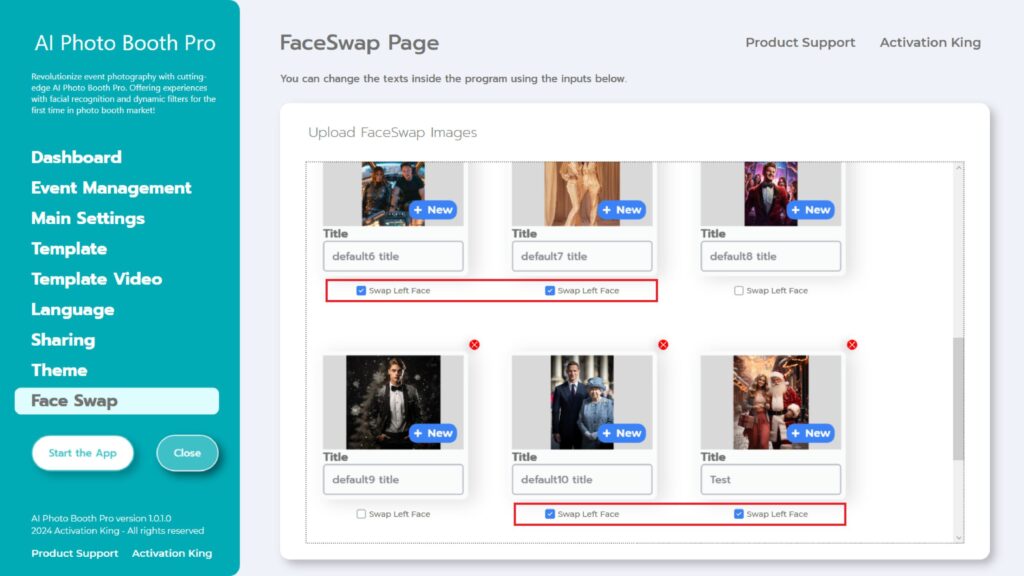
The important part to note is that if there is only one person in the image, remove the “Swap Right/Left Face” ticks. If there are two faces in your image, activate the “Swap Left Face” or “Swap Right Face” tick according to which face you want to process. Currently, our software can only perform face swaps on images with a maximum of two faces.
(We will soon release an update where you can perform face swaps on images with more than two faces.)
After making all the adjustments, click on the “Start the Apps” button.

When we enter the “Start the Apps” section, we’ll be greeted with this screen. I click once on the “Photo icon.”
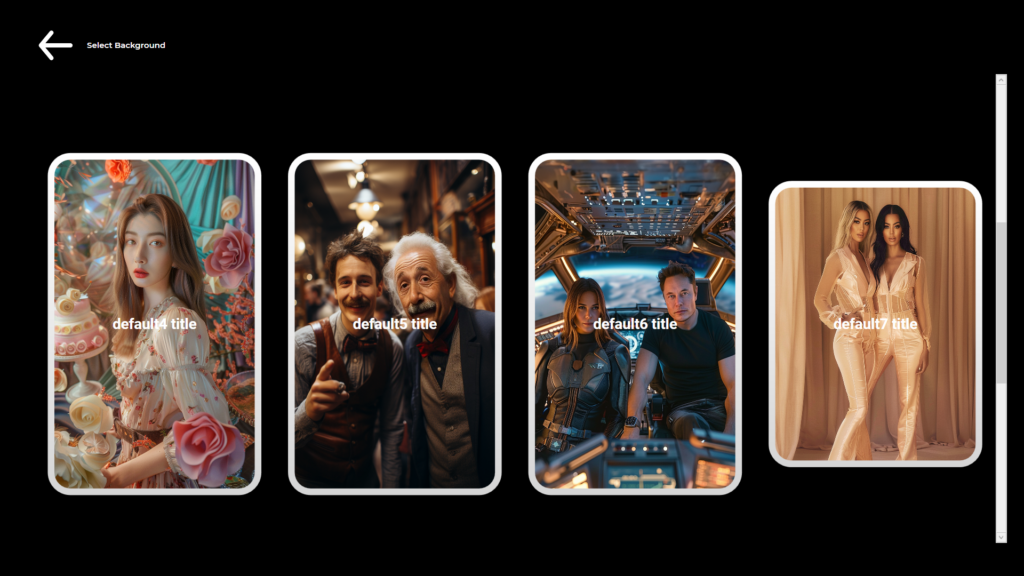
In the opened page, select the image on which you want to perform the “Face Swap” operation before taking a photo.

After your selection, the photo capture process takes place.
Seconds after the photo is taken, our image with the “Face Swap” operation applied appears on the screen.

On the right-hand side, you can Print, Email, send via Sms, or receive by scanning a QR code.
To return to the capture screen, press the “DONE” icon.
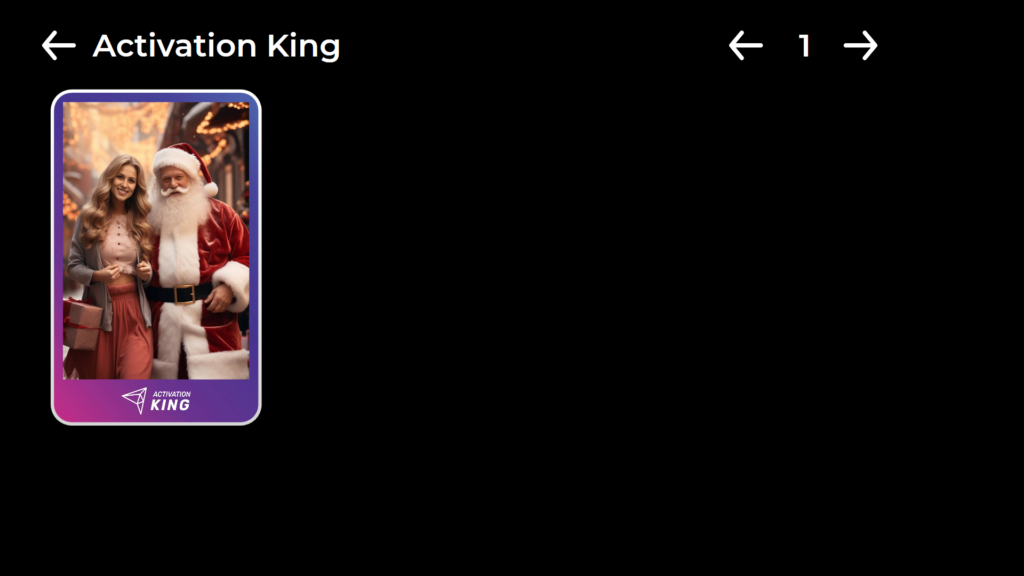
When you press the “Gallery” icon, you access the images you have previously taken.
To return to the “Settings Menu”, press the “F11” key, or for users with a touchscreen, simply tap five times consecutively on the upper right corner.”
